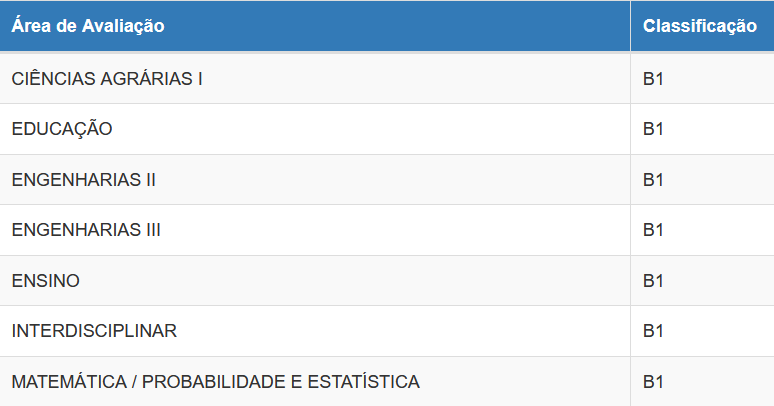Financial education in high school: an analysis of the works of the integrating projects of the PNLD 2021
DOI:
https://doi.org/10.35819/remat2022v8i2id6135Keywords:
Mathematics Education, Financial Education, National Didactic Book Program, High SchoolAbstract
Compared to other countries, Brazil occupies a position much lower than expected with regard to financial care, given that Brazilians are increasingly indebted. In this aspect, school financial education becomes of great social relevance, contributing to the formation of financially aware and literate citizens. The Ministry of Education made the teaching of the subject mandatory in 2020 and, in 2022, public schools across the country have received the works of the National Didactic Book Program aimed at the New High School. This work has the objective of verifying what the contributions of the projects about Financial Education present in the didactic works of integrative projects of the program, for the financial literacy of the students. The research, of a qualitative nature, is characterized as bibliographical. Based on current research on the subject, we developed indicators for the analysis of didactic works, in order to verify whether the works contribute to financial learning. Of the fourteen works available, five were analyzed, as they contain projects involving financial themes. From the analysis of the works, it is observed that the most recurrent themes of the books were forms of monetary organization and financial planning. Of the five works analyzed, four of them fully addressed these issues in their development. Although not all projects contemplate the indicators constructed, it can be considered that, with the didactic works analyzed, the level of knowledge of the students will be high, since all projects contribute to the development of students' financial literacy.
Downloads
References
ALMEIDA, C. B.; SANTOS, D. F.; BARBERINO, M. R. B.; SBRANA, M. F. C.; BUENO, C. O. C. + Ação – Na Escola e na Comunidade. São Paulo: FTD, 2020.
BLANCO, C. A. P.; PEREIRA, A. B.; PEREIRA, C. F. P.; SIQUEIRA, A. B.; GARCIA, A. D.; BAGGIO, L. L. V. Matemática em Projetos Integradores. Maceió: Fenix Livraria e Distribuidora de Livros – Eireli, 2020.
BRASIL. Como está a Educação Financeira dos jovens brasileiros? Uma análise a partir do PISA. 11 fev. 2021. Disponível em: https://pensologoinvisto.cvm.gov.br/como-esta-a-educacao-financeira-dos-jovens-brasileiros-uma-analise-a-partir-do-pisa. Acesso em: 20 jan. 2022.
BRASIL. Constituição da República Federativa do Brasil. Brasília, DF: Senado Federal, 1988.
BRASIL. Estratégia Nacional de Educação Financeira: Plano Diretor da ENEF. 2010. Disponível em: https://www.bcb.gov.br/pre/pef/port/Estrategia_Nacional_Educacao_Financeira_ENEF.pdf. Acesso em: 10 jan. 2022.
BRASIL. Ministério da Educação. Base Nacional Comum Curricular. Brasília: MEC, 2018.
BRASIL. O que é o Programa Educação Financeira na Escola? [2021b]. Disponível em: https://www.edufinanceiranaescola.gov.br/o-que-e-o-programa-educacao-financeira-nas-escolas-2/. Acesso em: 11 jan. 2022.
CANTEIRO, D. C S.; DE GOUVEIA, J.; DA SILVA, G. C. M.; GRACE ZAGGIA UTIMURA, G. Z.; GAY, M. R. G. Práticas na escola. São Paulo: Moderna, 2020.
COSTA, M. A.; BARNABÉ, F. M. F. Integração e Protagonismo. São Paulo: Editora do Brasil SA, 2020.
CRIDDLE, E. Financial literacy: Goals and values, not just numbers. Alliance, v. 34, n. 4, 2006.
FURTADO, P.; FACANALI, J.; GONÇALVES, E. P. Vamos juntos, profe! São Paulo: Saraiva, 2020.
GIL, A. C. Métodos e Técnicas de Pesquisa Social. São Paulo: Atlas, 2010.
PARCIANELLO, J. A.; LEHNER, R. Metodologias para o Ensino-Aprendizagem da Matemática Financeira na Educação Básica: uma Abordagem Prática. In: Os desafios da Escola Pública Paranaense na Perspectiva do Professor PDE: artigos. Cadernos PDE. v. 1. Governo do Estado do Paraná, Secretaria da Educação, 2014. Disponível em: http://www.diaadiaeducacao.pr.gov.br/portals/cadernospde/pdebusca/producoes_pde/2014/2014_unioeste_mat_artigo_janice_aparecida_parcianello.pdf. Acesso em: 9 nov. 2022.
PONTES, J. M. Educação financeira no ensino médio: concepções, enef e livros didáticos. Orientador: Victor Fernando de Matos. 2021. 23 f. Trabalho de Conclusão de Curso (Especialização em Ensino de Ciências e Matemática) – Instituto Federal de Educação, Ciência e Tecnologia de Goiás, Campus Itumbiara, Itumbiara, 2021. Disponível em: https://repositorio.ifg.edu.br/bitstream/prefix/660/1/mon.%20especializa%c3%a7%c3%a3o_Juliana%20Martins%20Pontes.pdf. Acesso em: 11 jan. 2022.
SILVA, M. F. S. A Educação Financeira como base para a contabilidade familiar: o controle financeiro para o uso e planejamento das finanças pessoais e domiciliares. Orientador: Fabrício Afonso de Souza. 2020. 21 f. Trabalho de Conclusão de Curso (Graduação em Ciências Contábeis) – Centro Universitário UNIFACIG, Manhuaçu (MG), 2020. Disponível em: http://pensaracademico.facig.edu.br/index.php/repositoriotcc/article/view/2521. Acesso em: 19 jan. 2022.
SOUSA, C. L. O.; GALVÃO JÚNIOR, P. F. M. O Impacto da Educação Financeira nos orçamentos pessoais e para os investidores no Brasil. Revista Campo do Saber. v. 6, n. 2, p. 27-44, jul./dez. 2020. Disponível em: https://periodicos.iesp.edu.br/index.php/campodosaber/article/view/349/271#. Acesso em: 23 jan. 2022.
SPC. Serviço de Proteção ao Crédito. 8 em cada 10 inadimplentes sofreram impacto emocional negativo por conta das dívidas, revela pesquisa CNDL/SPC Brasil. 2020. Disponível em: https://www.spcbrasil.org.br/pesquisas/pesquisa/7266. Acesso em: 10 jan. 2022.
VANDERLEY, M. S.; SILVA, J. G. S. ALMEIDA, S. A. Educação Financeira na Infância e Adolescência e seus Reflexos na vida adulta: uma revisão de literatura. Facit Business and Technology Journal. ed. 20, v. 1, p. 149-166, nov. 2020. Disponível em: https://jnt1.websiteseguro.com/index.php/JNT/article/view/825. Acesso em: 11 jan. 2022.
Downloads
Published
How to Cite
Issue
Section
License
Copyright (c) 2022 REMAT: Revista Eletrônica da Matemática

This work is licensed under a Creative Commons Attribution 4.0 International License.
REMAT retains the copyright of published articles, having the right to first publication of the work, mention of first publication in the journal in other published media and distribution of parts or of the work as a whole in order to promote the magazine.
This is an open access journal, which means that all content is available free of charge, at no cost to the user or his institution. Users are permitted to read, download, copy, distribute, print, search or link the full texts of the articles, or use them for any other legal purpose, without requesting prior permission from the magazine or the author. This statement is in accordance with the BOAI definition of open access.

































